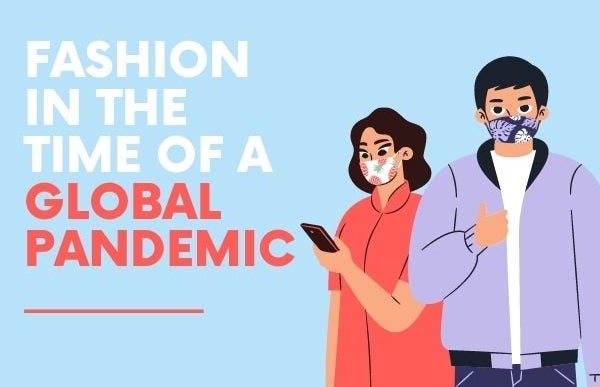It would be overly redundant to say that the global pandemic we are currently experiencing has impacted every aspect of our lives and made us consider what our ‘norm’ was prior. COVID-19 has brought about confronting certain realities and prompting change to how we will continue to live and operate for the foreseeable future. This does not only apply to people and their everyday lives and careers, but businesses and industries at large.
The fashion industry is one that has had to conform to the stringent impact of the virus during some of its busiest and most demanding seasons. From displaying virtual collections and cancelling shows entirely, the fashion industry will not continue to operate business as usual.
The industry experienced its first “blow” in March, just as the World Health Organization, WHO, declared the virus could be classified as a pandemic. The advent of the virus in Italy struck at the same time as Milan Fashion Week. Growing concern resulted in travelers and show-goers returning home and several runway shows to be cancelled. The fashion world was stunned by the indefinite postponing of the Met Gala and the CFDA Awards, among several other highly anticipated events. Due to the cancellations and rapid changes, Milan Fashion Week set the tone for the industry’s struggle, without even knowing the full extent of the virus’ impact.
Possibly one of the most shocking announcements made within the industry during the pandemic was, renowned fashion house, Saint Laurent’s decision to cancel their runway show for the spring 2021 season entirely. The decision to forego the show was not made solely due to the rising number of infections and suggested regulations mandated worldwide, but rather to stay in-tune with the drastic changes and re-imagining of the fashion world. The house’s creative director, Anthony Vaccarello stated, “Now more than ever, the brand will lead its own rhythm, legitimating the value of time and connecting with people globally by getting closer to them in their own space and lives.”
Following suit, fashion weeks and shows went fully digital. During which, fashion houses opted for conceptual and virtual presentations of their collections.
The projections for the impact on the fashion industry were established in the early months of the pandemic— March and April. The global fashion market experienced an unprecedented economic setback and decline. Fast-fashion retailers, department stores part of larger conglomerates and high-fashion houses, all suffered and were forced to enact change. Determining which stores and brands are going to survive is just one of the realities the industry faces. Several retailers and smaller businesses have been forced to close-up shop indefinitely, while larger, more established brands with financial backing have barely been able to stay afloat. A WWD article from March breaks down the coronavirus impact on the industry at length.
The financial and economic setbacks the industry is experiencing is not only made up of retail sales but luxury buying and selling as well. Luxury buying and selling cannot be done without presentation of a brand or house’s designs. Show cancellations result in nothing being presented to luxury buyers, which does not allow the products to be purchased by the clients loyal to the luxury, high-fashion brands they rely on.
Devastating and unfortunate do not even scrape the surface when describing the sense of all that has transpired throughout this pandemic. Albeit grim, the fashion industry still has hope for its resurgence. There is potential and vast opportunity for the industry to reinvent and reimagine itself. The pandemic has further exposed the wasteful and unsustainable nature of the fashion world, both environmentally and financially. Aslaug Magnusdottir for Forbes writes, “So as the world sits on pause during this COVID19 crisis, there exists a rare opportunity for the fashion world to rethink how it does things, financially and environmentally. This is certainly true of the major incumbents, fashion houses that control a large portion of the industry value chain. But it also applies to new entrants: innovators and disruptors that might find it the perfect time to shake up and improve upon the status quo.”
If the fashion world, especially the leaders dictating and contributing to the industry, lives up to the potential and prospective transformations, a new revolution will come about that will change the face of the industry and its influence in our world.
—
Edited by Kenzie Dye



